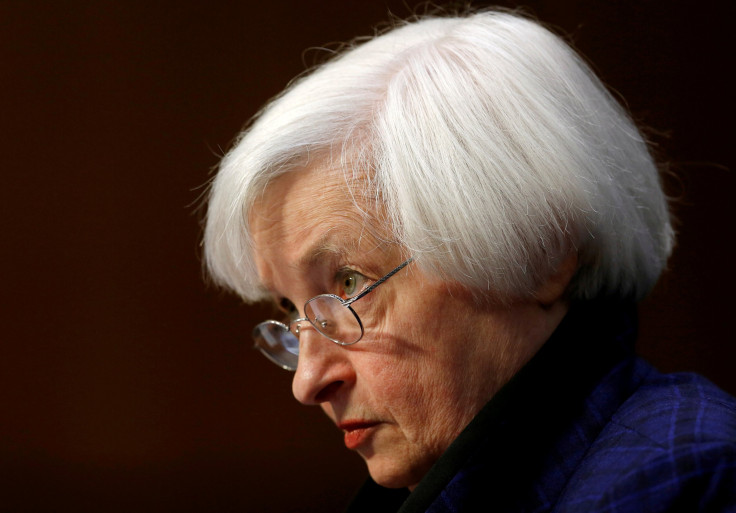Will The Federal Reserve Raise Interest Rates? Janet Yellen Will Hike Central Bank’s Rate Several Times In 2017, Experts Say

At the conclusion of a Federal Reserve meeting Wednesday, Janet Yellen will announce whether the central bank will raise the target for its federal funds rate, a bank-to-bank loan rate with influence on mortgage rates, credit card rates and other forms of interest.
Most analysts predict Yellen will take her foot off the gas pedal as the central bank awaits the economic impact of Donald Trump’s presidency. Using federal funds rate futures prices, which often forecast the market’s belief in the likelihood of rate changes, the CME Group, a financial market company, pegged the probability that the central bank would maintain the current level at 96 percent as of Monday morning.
“I think the Fed is going to take a break in January and really get a sense of where the economy is headed,” Lindsey Piegza, chief economist at financial services company Stifel Fixed Income, told the consumer finance site Bankrate. “We don’t know exactly what is going to come to fruition. Right now we’re at the stage of political posturing.”
The federal bank increased its target rate range in December, to between 0.5 and 0.75 percent from between 0.25 and 0.5 percent, for the second time since the recession, and plans to do so again “a few times a year” until 2019, as Yellen said in a Jan. 18 speech in San Francisco. The Fed lowers the rate in times of slow economic growth to incentivize more borrowing and, by extension, more business activity and consumer spending, and raises it to keep inflation from spiraling out of control in times of economic boom.
The upcoming meeting, aside, analysts, like forecasters at the French bank BNP Paribas, expect the central bank to hike the rate as many as four times in 2017. Boston Fed bank President Eric Rosengren, speaking at the Connecticut Business and Industry Association on Jan. 9, stressed the need to hasten the interest rate rise.
“I expect that appropriate monetary policy will need to normalize more quickly than over the past year,” Rosengren, normally one to take caution when it comes to policy changes, said, according to Reuters. He added that without a hike to rein the growing economy in, inflation could shoot too high, “which would place the economic recovery at risk.”
In a Jan. 19 speech at Stanford University in California, Yellen predicted that the American economy would continue to pick up steam, building on recent monthly unemployment rate lows and rising oil prices —often a key determinant of inflation, another factor necessary for a rate hike—allowing the Fed to move away from a policy tool generally used in response to an economic downturn. Still, she warned that the Fed would prefer to wait until inflation reached 2 percent, a sign that the economy is sufficiently booming.
But the Fed has good reason to push the rate up quickly toward what Yellen often refers to as a “neutral” level of around 3 percent. If an economic downturn were to happen out of the blue with the interest rate already near zero, the Fed would have one less way to respond. Likewise, if the economy were to suddenly pick up, an abrupt jump in the rate would send Americans’ home, business and credit card loan interest rates up, resulting in a negative shock.
With Trump signing executive orders that could potentially be detrimental to the economy, such as his strict new rules on immigration, and planning to implement massive growth-friendly policies, like the $1 trillion stimulus package he campaigned on, things could swing either way.
© Copyright IBTimes 2024. All rights reserved.






















